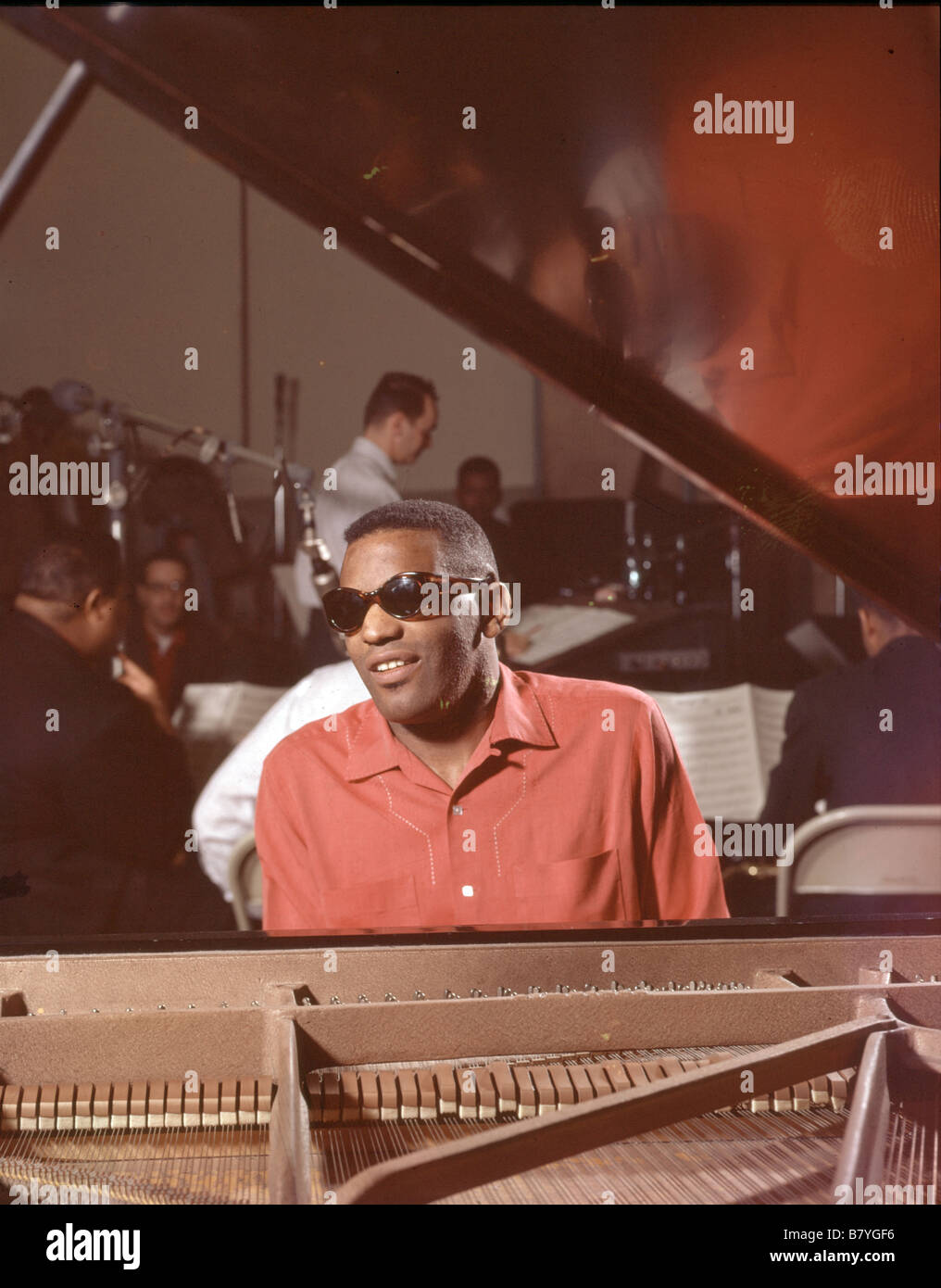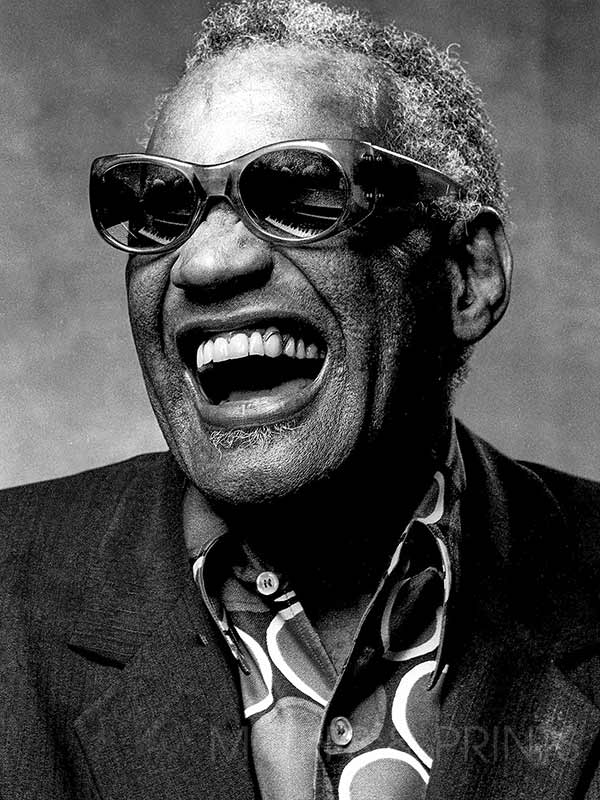Ray Charles, the name that resonates with soul, passion, and timeless melodies, is a figure who revolutionized the music industry. His connection with the pianoforte wasn’t just about playing notes; it was about pouring his heart into every single chord. From the streets of Florida to global fame, his journey is nothing short of inspiring. Imagine sitting in a dimly lit room, hearing those keys come alive under his fingers—pure magic, right? This is what makes Ray Charles so legendary.
Now, let’s dive into why the pianoforte became such an integral part of his life. Ray wasn’t just any musician; he was a trailblazer who redefined genres like blues, jazz, and gospel. The pianoforte wasn’t just an instrument for him—it was his voice, his confidant, and his partner in crime. His ability to blend genres seamlessly on the keyboard set him apart from others. People didn’t just listen to his music—they felt it deep in their souls.
But here’s the kicker: Ray didn’t let his challenges define him. Blind from the age of seven, he turned his limitations into strengths. His mastery over the pianoforte wasn’t just about skill; it was about emotion, raw and unfiltered. Every note he played told a story, and every story touched hearts across the globe. So, buckle up as we explore this musical odyssey through the eyes—and fingers—of Ray Charles.
Read also:Unveiling Rebecca Soteros A Deep Dive Into Her Life Career And Influence
Table of Contents
- Biography of Ray Charles
- Early Years and Introduction to Music
- The Importance of Pianoforte in Ray's Career
- Musical Influence and Legacy
- Signature Style on the Pianoforte
- Key Achievements and Awards
- Overcoming Challenges in His Life
- Iconic Songs and Albums
- Modern Impact and Influence
- Conclusion: The Legacy Lives On
Biography of Ray Charles
Before we get into the nitty-gritty of his relationship with the pianoforte, let’s take a step back and understand the man behind the music. Ray Charles Robinson, later known simply as Ray Charles, was born on September 23, 1930, in Albany, Georgia. Growing up in Greenville, Florida, Ray was surrounded by a community that valued music and artistry. His mother, Aretha Robinson, played a crucial role in shaping his early years, encouraging him to embrace his passion despite life’s obstacles.
Here’s a quick glance at some key details about Ray:
| Full Name | Ray Charles Robinson |
|---|---|
| Birth Date | September 23, 1930 |
| Place of Birth | Albany, Georgia |
| Occupation | Singer, Pianist, Composer |
| Spouse | Della Bea Robinson |
| Children | 12 children |
Early Years and Introduction to Music
Ray’s journey with music began at a young age. As a child, he was fascinated by the sounds around him, whether it was the church choir or the jukebox at a local café. His first exposure to the pianoforte came when he discovered an old upright piano at a neighbor’s house. It wasn’t long before he started teaching himself how to play. This self-taught approach laid the foundation for his unique style, which would later captivate audiences worldwide.
Tragedy struck early in Ray’s life when he lost his sight due to glaucoma at the age of seven. Instead of letting this setback defeat him, he channeled his energy into music. Attending the Florida School for the Deaf and Blind, Ray learned to read and write music in Braille, further honing his skills. By the time he was a teenager, he was already performing professionally, setting the stage for what was to come.
The Importance of Pianoforte in Ray's Career
The pianoforte wasn’t just an instrument for Ray—it was his lifeline. It allowed him to express emotions that words couldn’t capture. His technique was unlike anyone else’s, combining elements of blues, jazz, gospel, and R&B into a sound that was distinctly his own. Whether he was playing slow ballads or upbeat rhythms, the pianoforte was always at the heart of his performances.
One of the reasons the pianoforte became so important was its versatility. Ray could use it to create both simple melodies and complex arrangements, adapting to whatever mood he wanted to convey. For instance, tracks like “Georgia on My Mind” showcase his ability to craft soulful, heartfelt compositions, while songs like “I Got a Woman” highlight his knack for groove and rhythm.
Read also:Sharon Mae Disney The Forgotten Princess Of The Magic Kingdom
Musical Influence and Legacy
Ray Charles didn’t just influence the music industry—he reshaped it. His fusion of genres paved the way for future artists, breaking down barriers and proving that music knows no boundaries. Artists like Stevie Wonder, Aretha Franklin, and many others have cited Ray as a major influence. His work with the pianoforte showed that an instrument could be more than just a tool—it could be a storyteller.
His legacy extends beyond music. Ray used his platform to advocate for civil rights and equality, often performing at benefit concerts and speaking out against injustice. His commitment to social causes added another layer to his artistry, making him not just a musician but a cultural icon.
Signature Style on the Pianoforte
What made Ray’s style so distinctive? For starters, his ability to seamlessly switch between different genres without losing authenticity. His use of syncopation, improvisation, and dynamic shifts kept listeners engaged and excited. Imagine hearing the opening chords of “What’d I Say” and feeling the energy build up—it’s impossible not to move along with the rhythm.
Ray also had a knack for storytelling through his music. Each song felt like a chapter in a larger narrative, inviting listeners to connect emotionally. His touch on the pianoforte was both gentle and powerful, capable of conveying joy, sorrow, and everything in between. This versatility is what made his performances unforgettable.
Key Achievements and Awards
Throughout his career, Ray Charles received numerous accolades for his contributions to music. He was inducted into the Rock and Roll Hall of Fame in 1986 and the Blues Hall of Fame in 2013. In 2004, Rolling Stone ranked him second on their list of the 100 Greatest Artists of All Time. These honors are a testament to his impact on the industry and his lasting influence.
Some of his most notable awards include 18 Grammy Awards, a Lifetime Achievement Award, and a Presidential Medal of Freedom. These achievements not only celebrate his talent but also recognize his role in shaping the musical landscape.
Overcoming Challenges in His Life
Ray Charles faced numerous challenges throughout his life, yet he never let them hinder his dreams. Losing his sight at a young age could have been devastating, but Ray saw it as an opportunity to sharpen his other senses. He once said, “I don’t care too much for sight. I can see through my ears.” This attitude reflects his resilience and determination.
Additionally, navigating the racially segregated music industry of the 1950s and 60s required strength and perseverance. Ray refused to perform in venues that practiced segregation, using his influence to push for change. His commitment to equality extended beyond music, making him a symbol of hope for many.
Iconic Songs and Albums
No discussion about Ray Charles would be complete without mentioning his iconic songs and albums. Tracks like “Hit the Road Jack,” “Unchain My Heart,” and “Let the Good Times Roll” remain classics to this day. Each song showcases his mastery over the pianoforte and his ability to connect with audiences.
His album “Modern Sounds in Country and Western Music” is often regarded as a masterpiece. By blending country tunes with soulful arrangements, Ray created something entirely new. It’s a prime example of his innovative spirit and willingness to experiment.
Modern Impact and Influence
Even decades after his passing, Ray Charles continues to inspire new generations of musicians. His influence can be heard in contemporary artists like Alicia Keys, John Legend, and Bruno Mars, who draw inspiration from his style and passion. The pianoforte remains a central element in modern music, thanks in part to Ray’s pioneering work.
His story serves as a reminder that music has the power to transcend barriers and bring people together. Whether you’re listening to one of his classic hits or discovering his music for the first time, there’s no denying the magic that happens when Ray sits down at the pianoforte.
Conclusion: The Legacy Lives On
In conclusion, Ray Charles’ journey with the pianoforte is a testament to his genius, passion, and perseverance. From his humble beginnings in Florida to becoming a global icon, he redefined what it means to be a musician. His ability to blend genres, tell stories, and evoke emotions through his music continues to inspire millions.
So, the next time you hear a soulful melody or see someone playing the pianoforte with heart and soul, think of Ray Charles. His legacy lives on in every note played, every voice raised, and every dream chased. Share this article with your friends, leave a comment, and let’s keep the spirit of Ray Charles alive!


